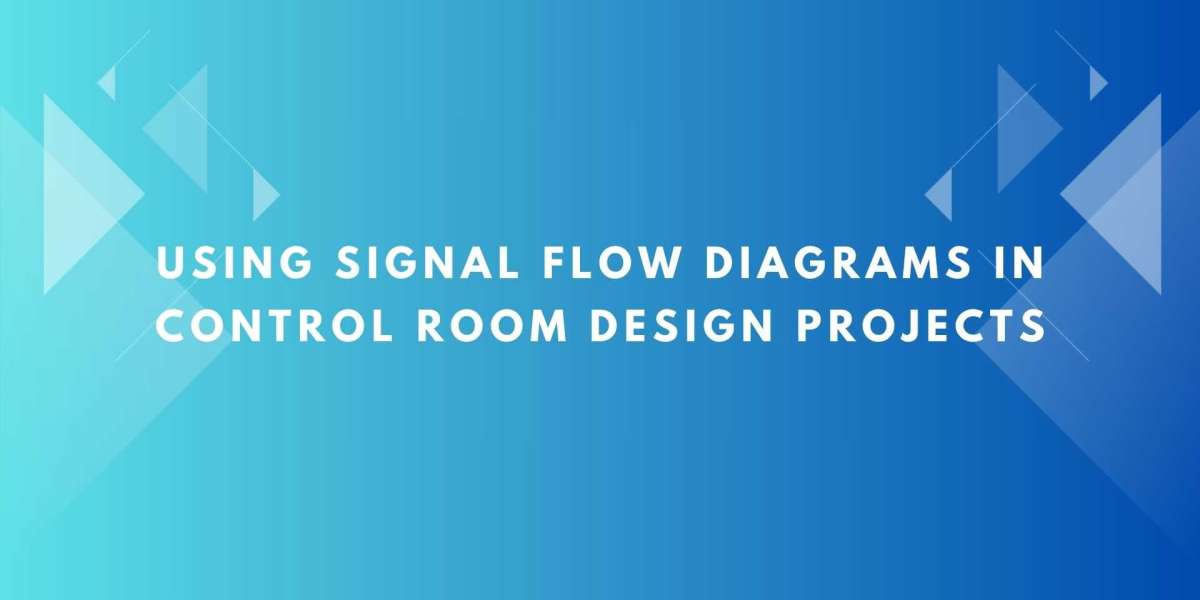Designing a control room is a complex task that requires precise planning, coordination, and attention to detail. Whether it is for a broadcast facility, security operations center, utility command center, or any critical operations environment, every piece of equipment must work together seamlessly. One of the most effective tools for achieving this is the Signal Flow Diagram. A Signal Flow Diagram provides a clear and detailed map of how signals travel through the system, helping designers, engineers, and technicians create reliable and efficient control room setups. In this blog, we will explore how Signal Flow Diagrams play a vital role in control room design projects and how they contribute to the success of these high-stakes environments.
Why Control Room Design Needs Careful Signal Planning
Control rooms are designed to monitor, manage, and respond to important data and events. They often include multiple video walls, workstations, audio systems, intercoms, recording devices, and networked systems. These components must be connected in ways that ensure fast and accurate information delivery without delays or failures. Without a clear plan, the complexity of these systems can lead to errors, downtime, or reduced efficiency.
A Signal Flow Diagram serves as a master blueprint that illustrates how every signal moves through the system. It ensures that all connections are accounted for and that the design meets operational requirements. It also provides a valuable reference for future maintenance, troubleshooting, or upgrades.
How a Signal Flow Diagram Supports Control Room Projects
Let us look at specific ways in which a Signal Flow Diagram supports the design and implementation of control room projects.
1. Clarifies the Overall System Architecture
In a control room, there are often dozens of sources, including cameras, microphones, computers, and external feeds. These signals need to be routed to various destinations such as video walls, speakers, and recording systems. A Signal Flow Diagram provides a clear visual representation of this architecture. By mapping out how each source connects to processing equipment and outputs, the diagram helps the design team confirm that the system will function as intended.
This level of clarity is essential in environments where accuracy and reliability are critical.
2. Facilitates Collaboration Across Teams
Control room projects typically involve multiple stakeholders. This can include AV designers, IT teams, architects, facility managers, and end users. A Signal Flow Diagram acts as a common language that all these groups can understand. It allows each team to see how their part of the system integrates with the larger design. This reduces the chance of miscommunication and ensures that everyone is working toward the same goal.
The diagram can be shared in meetings, used for reviews, and referenced during installation to keep the project on track.
3. Identifies Potential Bottlenecks and Failures
One of the advantages of creating a Signal Flow Diagram is that it helps identify potential weak points before the system is installed. For example, the diagram may reveal unnecessary complexity in signal routing, redundant devices, or single points of failure. This gives designers the chance to adjust the design for greater efficiency and resilience.
In control rooms, where system failure can have serious consequences, this level of foresight is invaluable.
4. Supports Efficient Installation and Commissioning
Once the design is finalized, the Signal Flow Diagram becomes a key tool during installation. It provides installers with a detailed guide that shows exactly where each cable, device, and connection should go. This speeds up the installation process and helps ensure that the system is built exactly as designed.
During commissioning, the diagram can also be used to verify that all connections are correct and that signals are flowing as expected.
5. Aids in Troubleshooting and Maintenance
After the control room is operational, a Signal Flow Diagram continues to provide value. When issues arise, technicians can use the diagram to trace signals and identify the source of problems. This structured approach to troubleshooting saves time and reduces system downtime.
The diagram also serves as an essential record for future maintenance or system upgrades. When new equipment is added or signal paths are changed, the diagram can be updated to reflect the current system.
Best Practices for Using Signal Flow Diagrams in Control Room Design
To get the most benefit from a Signal Flow Diagram, it is important to follow a few best practices.
Keep the diagram clear and organized. Arrange it so that signals flow in a logical direction, typically from left to right or top to bottom.
Use consistent symbols and labels. Every device and connection should be clearly identified to prevent confusion.
Include control, network, and power connections. A complete diagram goes beyond just audio and video signals to show how the entire system operates.
Update the diagram as the system evolves. A Signal Flow Diagram is only useful if it reflects the actual system design.
Make the diagram accessible. Store it in a shared location so that all stakeholders can access it when needed.
Conclusion
A Signal Flow Diagram is an essential tool in control room design projects. It simplifies complex systems by providing a clear and detailed map of how signals move through the environment. From the initial design stage to installation, commissioning, and ongoing maintenance, a Signal Flow Diagram helps ensure that control room systems are reliable, efficient, and easy to manage. In high-pressure environments where every second counts, investing in a well planned Signal Flow Diagram is a smart decision that supports long term success.








